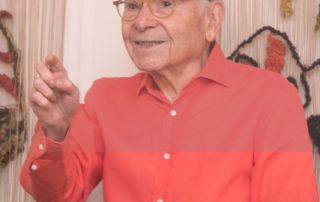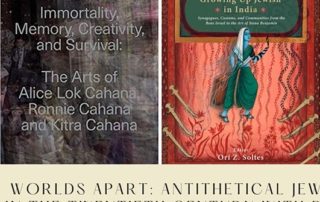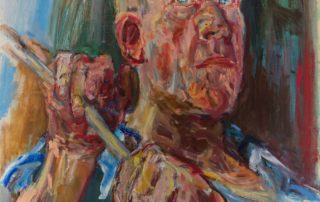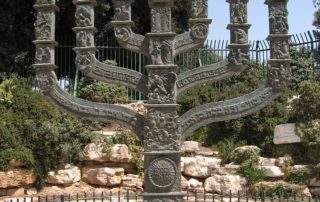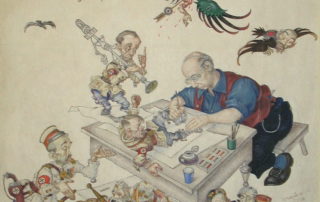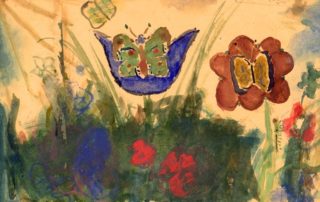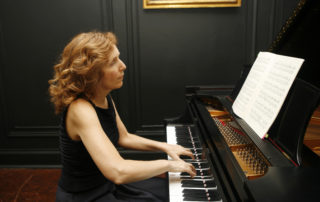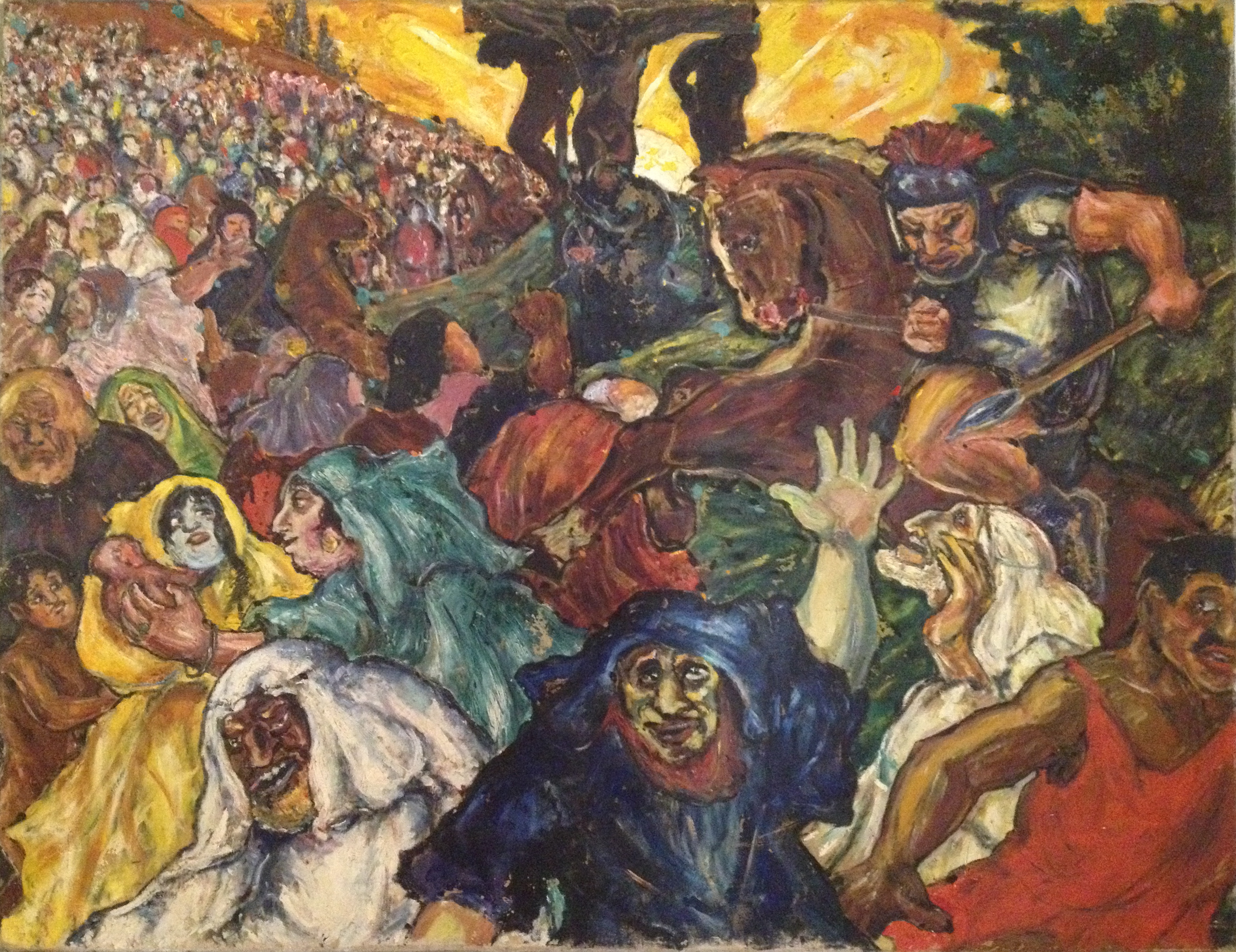Rachel Stern2022-02-18T06:42:00-05:00May 11th, 2021|Events, Past Events|
Join the Fort Tryon Jewish Center (FTJC) and the Fritz Ascher Society for a LIVE DATA ENTRY EVENT to help build the world’s largest digital monument to victims of the Holocaust: the Arolsen Archives’ #everynamecounts. THIS EVENT WAS NOT RECORDED. Opening Remarks Rabbi Guy Austrian Fort Tryon Jewish Center in New York Rachel Stern Director and CEO of the Fritz Ascher Society in New York Introduction and Moderation Elizabeth Berkowitz Digital Interpretation Manager of the Fritz Ascher Society in New York #everynamecounts is a crowd-sourced data entry initiative to return the names of Holocaust victims, their families, and details of their lives into the findable, keyword-searchable public record. Participants enter information about Nazi victims and family members from digitized [...]
Rachel Stern2021-06-14T18:07:03-04:00March 31st, 2021|Events, Past Events|
THIS EVENT WAS NOT RECORDED. After surviving the Holocaust, Shoshana Comet (1923-2012) could not speak about her experiences. One day in 1968, Shoshana announced that she had joined a course on weaving. At home, she wove five 6-foot high tapestries which served as a means to unshackle herself from her holocaust trauma. Shoshana then trained to become a psychotherapist, working with Holocaust survivors and their families who had been scarred by their experience. (See Ted Comet, Transforming Trauma Into Creative Energy, March 10, 2014) Ted is giving tours of Shoshana's tapestries to diverse groups, including students from Germany. For the past year, these tours are virtual, developed and conducted by DOROT, an innovative leader in designing intergenerational programs, supportive services and opportunities that enhance the [...]
Rachel Stern2022-02-18T06:23:24-05:00March 30th, 2021|Events, Past Events|
Conversation with Dr. Meital Orr and Dr. Ori Z. Soltes Opening remarks Rachel Stern, Fritz Ascher Society forPersecuted, Ostracized and Banned Art Anke Yael Popper, Embassy of the Federal Republic of Germany Organized by the Center for Jewish Civilization at Georgetown University in Washington D.C. This program delves into the following books by Ori Z Soltes: Immortality, Memory, Creativity, and Survival: The Arts of Alice Lok Cahana, Ronnie Cahana, and Kitra Cahana This book reviews the story of a 14-year-old girl from Sarvar, Hungary who was deported to Auschwitz by the Nazis, together with her family. She was the sole survivor of the deportation and transit through three different camps, ended up marrying a rabbi, moving to Houston, Texas, [...]
Rachel Stern2022-02-18T06:37:23-05:00March 4th, 2021|Events, Past Events|
The International Tracing Service (ITS), since 2019 called Arolsen Archives, was established by the Allies in 1948 as a central search and information center. They house the world’s most extensive collection of documents about the victims of National Socialist persecution, including documents from Nazi concentration camps, ghettoes and penal institutions, documents about forced laborers, and documents from the early post-war period about Displaced Persons, mainly Holocaust survivors, former concentration camp prisoners, and forced laborers. People who had fled the sphere of influence of the Soviet Union for political reasons are also included. The archive's holdings consist of 30 million documents in total and belong to UNESCO’s Memory of the World. At this event, Floriane Azoulay (Director) and Giora Zwilling (Deputy [...]
Rachel Stern2022-02-18T06:04:58-05:00March 3rd, 2021|Events, Lectures, Past Events|
The Austrian artist Oskar Kokoschka (1886-1980) achieved world fame with his intense expressionistic portraits and landscapes. Rüdiger Görner, author of the first English-language biography, depicts the artist in all his fascinating and contradictory complexity. He traces Kokoschka’s path from bête noire of the bourgeoisie and a so-called ‘hunger artist’ to a wealthy and cosmopolitan political and critical artist who played a major role in shaping the European art scene of the twentieth century and whose relevance is undiminished to this day. In 1934, Kokoschka left Austria for Prague, and in 1938, when the Czechs began to mobilize for the expected invasion by the German Wehrmacht, Kokoschka fled to the United Kingdom, where he remained during the war. Although he [...]
Rachel Stern2022-02-18T07:06:06-05:00February 22nd, 2021|Events, Lectures, Past Events|
Born 1877 in Dortmund, the sculptor Benno Elkan (1877-1960) first studied painting in Munich and Karlsruhe. At the end of his studies, he turned to sculpture. As a young artist, he spent time in Paris, Rome, and Frankfurt. Elkan’s oeuvre was largely made up of commissions. In the beginning, he mainly created tombs. Medals, portrait busts of well-known personalities, monuments to victims and candelabras follow, partly for the religious (Jewish and Christian) context. Elkan fled persecution by the German Nazi regime to Great Britain in 1934and lived with his family in London until the end of his life. Perhaps the most important work besides the Menorah in Jerusalem (1956) was never built: Memorial to the Defenseless Victims of the Bombing [...]
Rachel Stern2022-02-18T06:31:18-05:00February 17th, 2021|Events, Lectures, Past Events|
During the first four decades of the twentieth century, Polish Jewish artist Arthur Szyk (1894–1951) was best known for his richly detailed book illustrations and magnificent illuminations on Jewish themes. He portrayed the Jews as a heroic nation that had resisted oppression through the ages and eventually triumphed. His Jews were fighters for their own freedom and the freedom of others. Szyk sought to redefine how the Jews viewed themselves and how others viewed them. His works thus challenged the notion that Jewish history was merely one long saga of suffering and, at the same time, refuted the then common antisemitic canard that the Jews were a cowardly people. With the coming to power in Germany of Adolf Hitler [...]
Rachel Stern2022-02-18T07:19:09-05:00January 11th, 2021|Events, Lectures, Past Events|
WATCH THE RECORDING OF THIS EVENT HERE. Visual art during and after the Holocaust, by victims and survivors eloquently contradicts the famous comment by Theodor Adorno that "after the Holocaust to make art is barbaric." On the contrary, it was and is necessary: as part of the record of events as they were transpiring, and as part of the human response to horror--to express anger, to raise questions, to offer healing--in the time after those events. Who creates the art and what kind of art is created? What role does it play in wrestling with the question of what God is and what we humans are? These issues have implications both from within the heart of the Holocaust and from well beyond its particular boundaries. [...]
Rachel Stern2022-02-18T07:23:41-05:00December 31st, 2020|Events, Lectures, Past Events|
Join the Museum of Jewish Heritage — A Living Memorial to the Holocaust, the German Consulate General in New York, and the Fritz Ascher Society for Persecuted, Ostracized, and Banned Art for a stirring performance of Enger’s Mischlinge Exposé, Live from Edmond J. Safra Hall™. The performance will be followed by a discussion between Enger and Rachel Stern, Founding Director and CEO of the Fritz Ascher Society. Carolyn Enger is a pianist based in the greater New York City area, with roots reaching back to Breslau, now Wroclaw, Poland. Her Mischlinge Exposé brings to light the stories of Mischlinge—a derogatory term used by the Nazis to describe people with both Jewish and Aryan ancestry—like her [...]
Rachel Stern2022-02-18T07:13:15-05:00December 3rd, 2020|Events, Lectures, Past Events|
Oskar Nerlinger (1893-1969) was one of the most important artists of the committed art scene in the Weimar Republic. He was a member of the Association of Proletarian Revolutionary Art (ASSO for short), which was founded in 1928 and belonged to the KPD, which cooperated with the Soviet avant-garde artist group Oktober. At that time there was no conflict between positions of aesthetic modernism and KPD politics. In 1932 the political and artistic avant-garde in the Soviet Union fell apart, with serious consequences for left-wing artists in Germany. Almost at the same time, the Nazi system broke with all forms of modernity. With his idea of art suddenly doubly isolated within his own party, which followed Stalin's art verdict, [...]
Rachel Stern2020-03-03T07:55:35-05:00August 10th, 2019|Events, Past Events|
ZWISCHEN UTOPIE UND EXIL ARCHITEKTUR, MALEREI UND FILM IM POTSDAM UM 1930 Eine musikalische Zeitreise mit dem Bus in drei Etappen Auf dieser Bustour wird das Potsdam am Ende der Weimarer Republik wieder lebendig. Lassen Sie sich überraschen von der Vielfalt der modernen Architektur und den faszinierenden Kunstwerken jener Zeit, oft gespiegelt in den wechselvollen Lebenswegen ihrer Schöpfer. Zum Abschluss der Exkursion sind im selten zugänglichen Studio des Filmorchester Babelsberg die großen Hits der UFA-Zeit ebenso zu erleben wie die spannenden Geschichten ihrer Entstehung. 10.30 Uhr Musikalischer Auftakt im Nikolaisaal Matthew Rubenstein, Klavier 11.00 Uhr Erste Etappe Die Architektur der Potsdamer Moderne (Rundfahrt mit Stopps u.a. am Luftschiffhafen) Referentin: Prof. Karin Flegel, Urania Potsdam 12.30 Uhr Intermezzo: Mittagessen im Kongresshotel [...]
Rachel Stern2018-12-04T12:21:16-05:00October 25th, 2017|Select Press Coverage|
Bilder eines Vereinsamten Das Museum Gunzenhauser erinnert an den kaum bekannten jüdischen Künstler Fritz Ascher: Dessen expressionistisch-symbolistische Bilder sind eine echte Wiederentdeckung wert, denn zwei Weltkriege konnten seine künstlerische Kraft nur schwächen - aber nicht brechen Matthias Zwarg CHEMNITZ - Es gibt ein Porträt von Fritz Ascher aus dem Jahr 1912, gemalt von seinem Freund Eduard Bischoff. Es zeigt einen optimistischen jungen Mann: Anzug, rote Krawatte, frech den Kopf auf den Arm gestützt, lächelt er froh und selbstbewusst dem Betrachter entgegen. Und es gibt ein Selbstporträt von Fritz Ascher aus dem Jahr 1953: Weiss und grau über schwarzer Tusche, Aquarell-Farbtupfer wie Wunden in dem Gesicht, in das so etwas wie die Suche nach Fassung nach dem Entsetzen eingeschrieben ist. Dazwischen [...]



